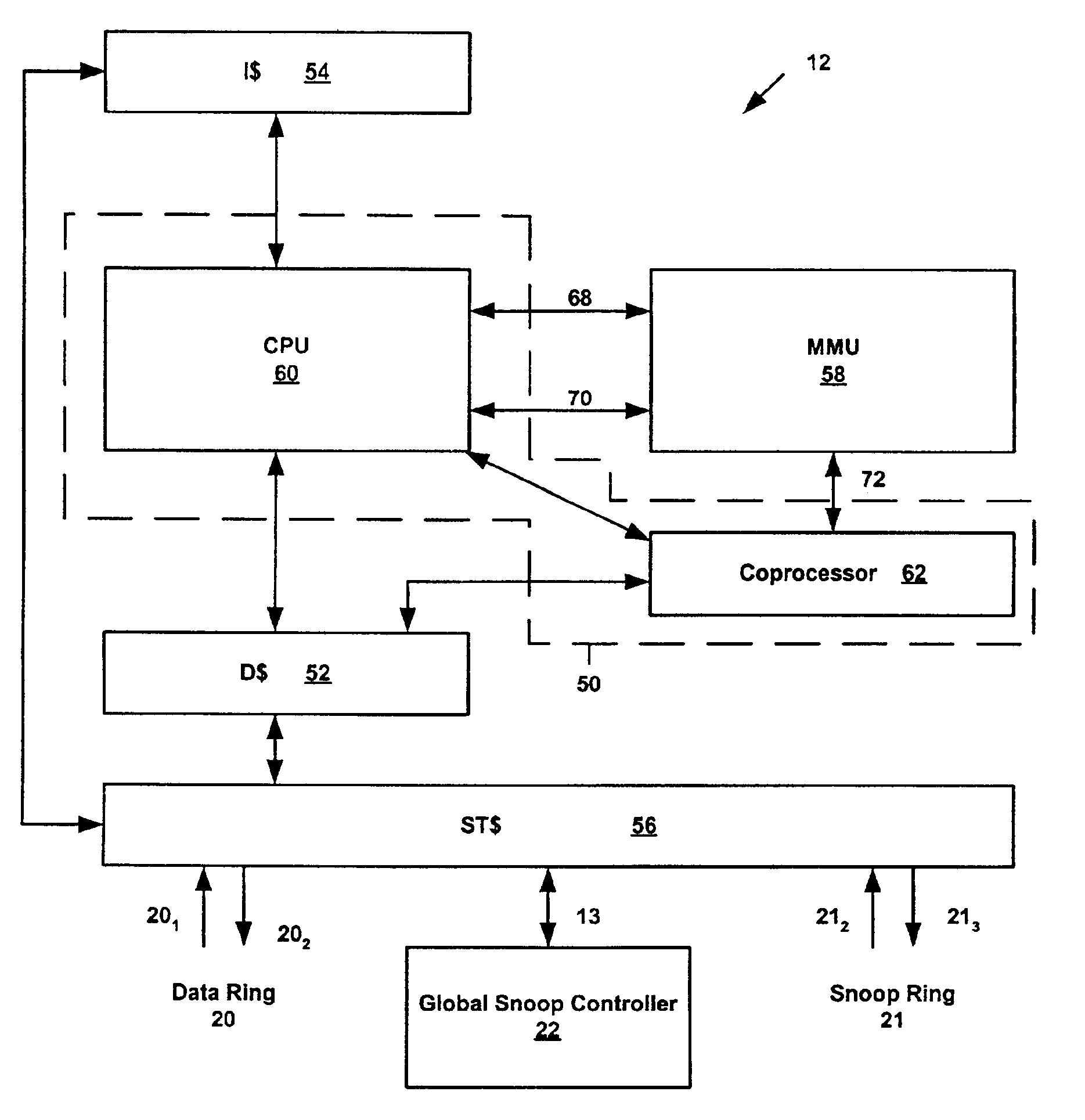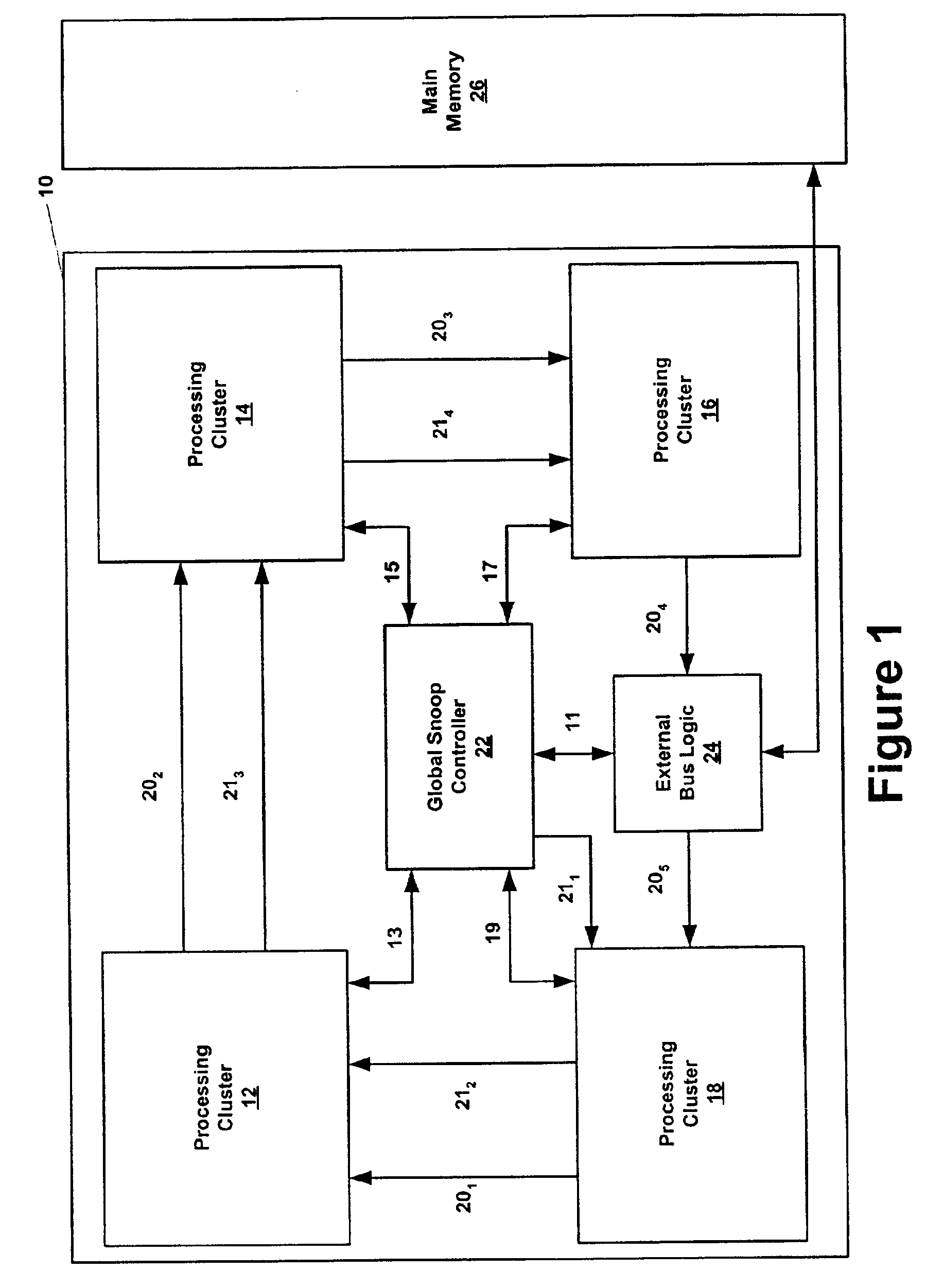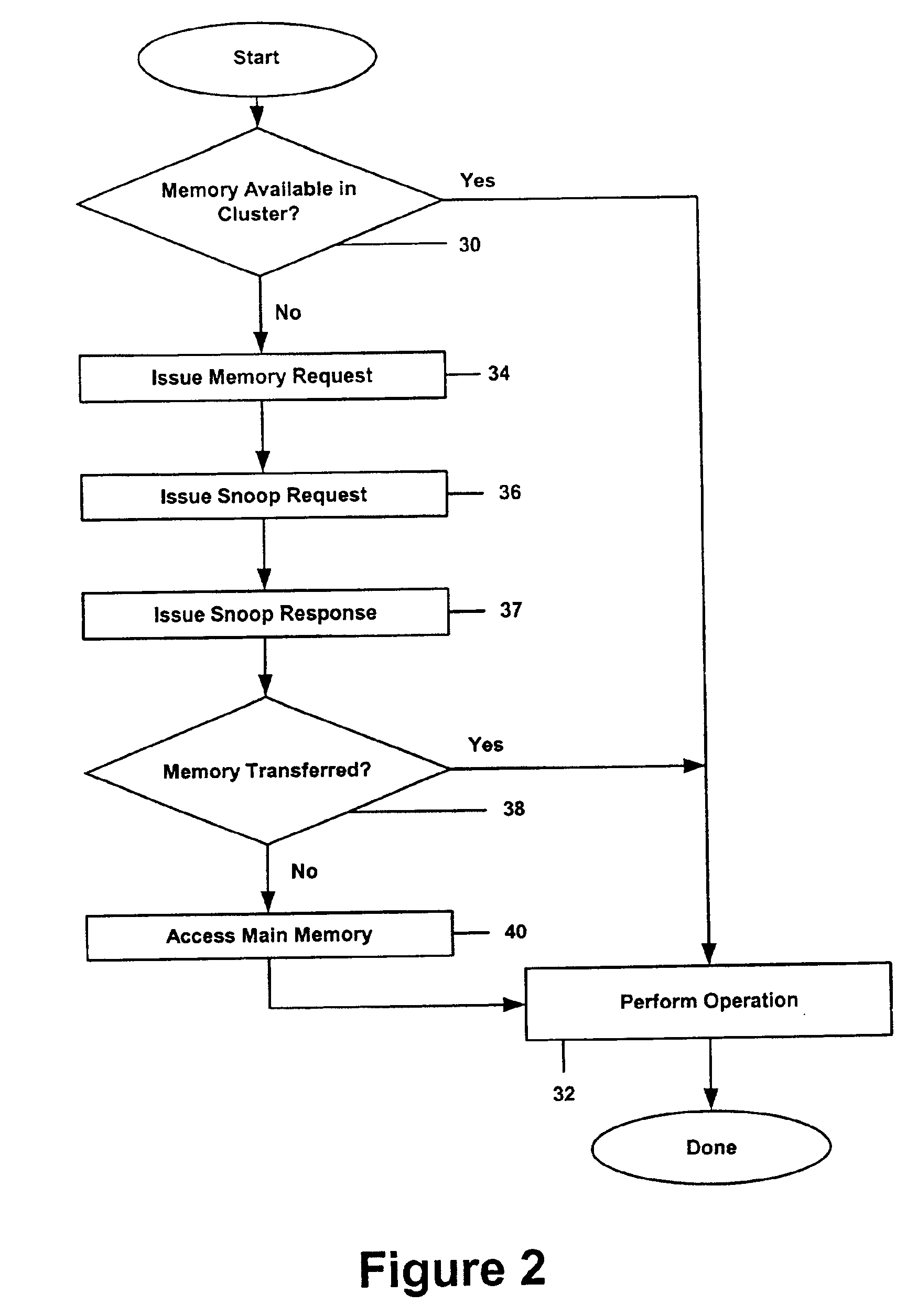First tier cache memory preventing stale data storage
a data storage and cache technology, applied in the field of network packet processing, can solve the problems of putting a heavy burden on the computer system, long waiting queues of applications, and system facing the challenge of effectively utilizing processing resources, and achieve the effect of efficient management of processing resources and memory transfers
- Summary
- Abstract
- Description
- Claims
- Application Information
AI Technical Summary
Benefits of technology
Problems solved by technology
Method used
Image
Examples
Embodiment Construction
A. Multi-Processing Unit
FIG. 1 illustrates a multi-processor unit (MPU) in accordance with the present invention. MPU 10 includes processing clusters 12, 14, 16, and 18, which perform application processing for MPU 10. Each processing cluster 12, 14, 16, and 18 includes at least one compute engine (not shown) coupled to a set of cache memory (not shown). The compute engine processes applications, and the cache memory maintains data locally for use during those applications. MPU 10 assigns applications to each processing cluster and makes the necessary data available in the associated cache memory.
MPU 10 overcomes drawbacks of traditional multi-processor systems. MPU 10 assigns tasks to clusters based on the applications they perform. This allows MPU 10 to utilize engines specifically designed to perform their assigned tasks. MPU 10 also reduces time consuming accesses to main memory 26 by passing cache data between clusters 12, 14, 16, and 18. The local proximity of the data, as wel...
PUM
 Login to View More
Login to View More Abstract
Description
Claims
Application Information
 Login to View More
Login to View More - R&D
- Intellectual Property
- Life Sciences
- Materials
- Tech Scout
- Unparalleled Data Quality
- Higher Quality Content
- 60% Fewer Hallucinations
Browse by: Latest US Patents, China's latest patents, Technical Efficacy Thesaurus, Application Domain, Technology Topic, Popular Technical Reports.
© 2025 PatSnap. All rights reserved.Legal|Privacy policy|Modern Slavery Act Transparency Statement|Sitemap|About US| Contact US: help@patsnap.com



